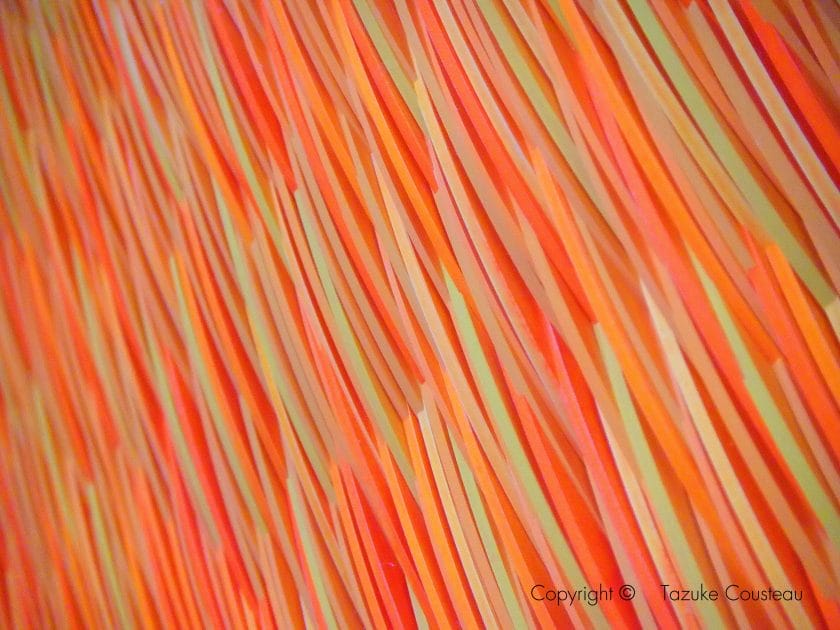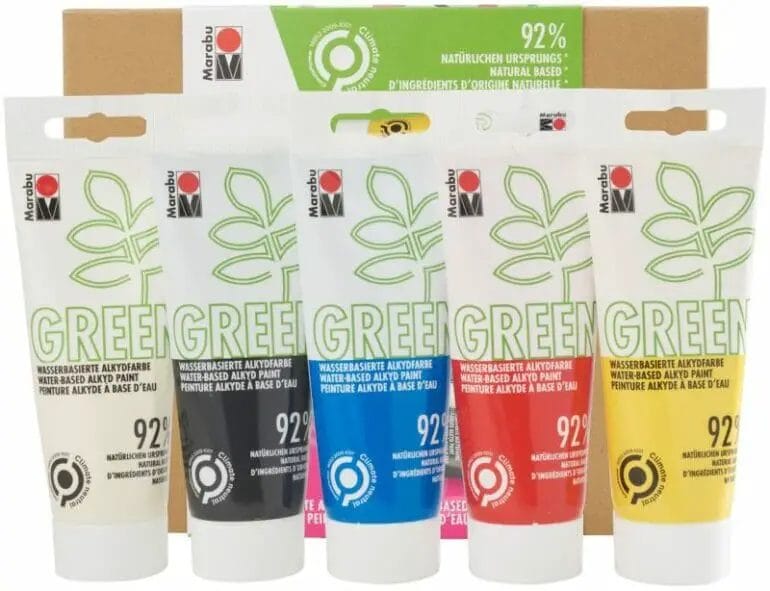Acrylic alkyd paint is a versatile and high-performance paint that combines the durability and adhesion of alkyd paint with the quick drying and easy cleanup of acrylic paint. It offers long-lasting protection, excellent color retention, and a smooth finish that resists chipping, cracking, and fading. This paint is suitable for both interior and exterior applications, making it a popular choice for various surfaces, including wood, metal, and plastic. Its ease of use, durability, and beautiful finish make acrylic alkyd paint a favorite among DIY enthusiasts and professional painters alike.

Application Techniques for Acrylic Alkyd Paint
Acrylic alkyd paint is a popular choice for both amateur and professional painters due to its durability, versatility, and ease of use. It combines the benefits of acrylic paints, such as quick drying time and color retention, with the durability and smooth finish of alkyd paints. To make the most out of your acrylic alkyd paint, it’s important to use the right application techniques. In this section, we will discuss some key techniques that can help you achieve the best results with your acrylic alkyd paint.
1. Surface Preparation
Before applying acrylic alkyd paint, it is crucial to properly prepare the surface you will be painting on. This includes cleaning the surface to remove any dirt, grease, or loose paint, as well as sanding any rough areas. It is also recommended to prime the surface with a suitable primer to ensure proper adhesion and enhance the longevity of the paint.
2. Choosing the Right Tools
When it comes to applying acrylic alkyd paint, using the right tools can make a significant difference in the finished result. For smaller areas or detailed work, consider using brushes with synthetic bristles, as they offer better control and precision. For larger areas, rollers can be a more efficient option. When selecting a roller, opt for one with a medium to long nap, depending on the texture of the surface you are painting.
3. Applying Thin Coats
Acrylic alkyd paint is best applied in thin coats rather than thick layers. This allows for better adhesion, faster drying time, and reduces the risk of drips or uneven coverage. Start by applying a thin even coat and allow it to dry before applying additional coats. Multiple thin coats will typically provide a smoother and more professional-looking finish compared to one thick coat.
4. Proper Brush Technique
When using a brush to apply acrylic alkyd paint, it’s important to use the proper technique to achieve a smooth and even finish. Load the brush with paint and start by applying it in the direction of the grain or the shape of the object you are painting. Use long, smooth strokes and avoid excessive brushing, as it can leave noticeable brush marks. For a seamless finish, lightly feather the edges of each brushstroke as you go.
5. Rollers for Larger Areas
When using a roller to apply acrylic alkyd paint on larger areas, it’s important to maintain a consistent pressure and avoid overworking the paint. Start by rolling the paint onto the surface in a “W” or “M” pattern to ensure even distribution. Then, use long, smooth strokes to roll out the paint, overlapping each stroke slightly. To avoid creating roller marks, it’s essential to maintain a wet edge by not allowing the paint to dry completely between coats.
6. Drying and Curing Time
After applying acrylic alkyd paint, it’s important to allow proper drying and curing time for the paint to fully set and harden. While acrylic alkyd paint dries relatively quickly, curing can take longer. Follow the manufacturer’s instructions for recommended drying and curing times, and avoid exposing the freshly painted surface to excessive moisture or temperature fluctuations during this period.
7. Cleanup and Maintenance
After completing your painting project, it’s essential to clean your brushes, rollers, and any other tools used with acrylic alkyd paint. Use the appropriate cleaning solution or soap and warm water to remove any residual paint. Proper cleanup and maintenance of your tools will help prolong their lifespan and ensure optimal performance for future painting projects.
In summary, by following these application techniques for acrylic alkyd paint, you can achieve professional-looking results and enhance the longevity of your painted surfaces. Proper surface preparation, choosing the right tools, applying thin coats, using the correct brush technique, and allowing sufficient drying and curing time are all key factors in achieving a smooth and durable finish with acrylic alkyd paint. With the right techniques and attention to detail, you can make the most out of this versatile paint and create stunning works of art.

Differences between Acrylic Alkyd Paint and Other Types of Paint
When it comes to choosing the right paint for your project, you may come across various types of paint options. Two popular choices are acrylic alkyd paint and other types of paint. Let’s explore the differences between acrylic alkyd paint and other types of paint to help you make an informed decision.
1. Composition
Acrylic alkyd paint is a unique blend of acrylic resin and alkyd resin. Acrylic resin is a water-based binder that provides excellent adhesion, durability, and color retention. On the other hand, alkyd resin is an oil-based binder that offers a smooth finish and enhanced durability. Other types of paint, such as latex paint, are solely water-based, while oil-based paint is made of a solvent-based binder.
2. Application
Acrylic alkyd paint is known for its versatility and can be used on various surfaces, including wood, metal, and concrete. It can be applied using a brush, roller, or sprayer. Other types of paint may have specific applications, such as latex paint, which is commonly used for interior walls, and oil-based paint, which is often used for furniture or trim.
3. Drying Time
Acrylic alkyd paint has a relatively quick drying time compared to traditional oil-based paint. It typically dries within a few hours, allowing for multiple coats or faster project completion. Oil-based paint, on the other hand, requires a longer drying time, often taking several days to fully cure.
4. Odor and VOCs
Acrylic alkyd paint has a low odor and emits fewer volatile organic compounds (VOCs) compared to oil-based paint. This makes it a suitable choice for indoor projects, as it minimizes the release of harmful fumes. Other types of paint, particularly oil-based paint, tend to have a strong odor and higher VOC content.
5. Clean-up and Maintenance
Acrylic alkyd paint can be easily cleaned with soap and water, making it convenient for everyday use. It also offers excellent resistance to staining, fading, and yellowing, ensuring long-lasting beauty. Other types of paint, like oil-based paint, require the use of solvents for cleanup and may require more maintenance over time.
6. Finish and Durability
Acrylic alkyd paint provides a smooth, durable, and high-quality finish that can withstand wear and tear. It offers good resistance to moisture, UV rays, and temperature changes. Other types of paint may offer different finishes, such as matte, satin, or gloss, but their durability may vary.
7. Price
When comparing prices, acrylic alkyd paint is generally more expensive than latex paint but still more affordable than high-end oil-based paint. The cost difference is due to the unique blend of acrylic and alkyd resins, which contribute to its superior performance.
In summary, acrylic alkyd paint stands out from other types of paint due to its unique composition, versatility, quick drying time, low odor, easy clean-up, and durable finish. While it may come at a slightly higher price point, its performance and long-lasting results make it a worthwhile investment for your painting projects.

Tips for achieving the best results with acrylic alkyd paint
Acrylic alkyd paint is a popular choice among artists and DIY enthusiasts due to its versatility and durability. Whether you are painting a canvas, furniture, or walls, using acrylic alkyd paint can result in a beautiful and long-lasting finish. To ensure the best results, here are some tips to keep in mind:
1. Prepare the surface
Before applying acrylic alkyd paint, it is essential to prepare the surface properly. Clean the surface thoroughly to remove any dirt, dust, or grease. If there are any imperfections, such as cracks or holes, fill them in and sand the surface smooth. This will ensure that the paint adheres properly and provides a smooth finish.
2. Prime the surface
When working with acrylic alkyd paint, it is recommended to prime the surface before painting. Priming helps to create a barrier between the paint and the surface, ensuring better adhesion and preventing stains. Choose a primer that is compatible with acrylic alkyd paint and apply it according to the manufacturer’s instructions.
3. Use the right tools
Using the right tools can make a significant difference in achieving the best results with acrylic alkyd paint. Opt for high-quality brushes or rollers specifically designed for acrylic alkyd paint. These tools will provide better control and coverage, resulting in a smoother and more even finish.
4. Apply thin layers
Instead of applying thick coats of paint, it is recommended to apply multiple thin layers. This allows each layer to dry properly and promotes better adhesion. Thin layers also help to prevent drips and uneven drying, resulting in a more professional-looking finish.
5. Allow sufficient drying time
Acrylic alkyd paint typically dries faster than traditional oil-based paints, but it is still important to allow sufficient drying time between coats. Read the manufacturer’s instructions for the specific drying time and avoid rushing the process. Patience during the drying stage will ensure a more durable and flawless finish.
6. Consider ventilation
When working with acrylic alkyd paint, it is essential to provide proper ventilation. Open windows or use fans to ensure good air circulation, especially if you are working indoors. Proper ventilation helps to prevent the buildup of fumes and allows the paint to dry properly.
7. Clean up properly
After completing your painting project, make sure to clean up your tools and brushes properly. Acrylic alkyd paint can be challenging to remove once it dries, so it is essential to clean them immediately after use. Use warm soapy water or a recommended paint cleaner to remove any residue.
By following these tips, you can achieve the best results when working with acrylic alkyd paint. Remember to prepare the surface, use the right tools, apply thin layers, allow proper drying time, consider ventilation, and clean up properly. These practices will help you achieve a professional-looking finish and ensure the longevity of your painted surfaces.
Recommended Surfaces for Using Acrylic Alkyd Paint
Acrylic alkyd paint is a versatile and durable paint that combines the best properties of acrylic and alkyd paints. It is known for its excellent adhesion, color retention, and resistance to wear and tear. Whether you are a professional painter or a DIY enthusiast, acrylic alkyd paint can be a great choice for a variety of surfaces. In this section, we will explore some of the recommended surfaces for using acrylic alkyd paint.
1. Interior Walls
Acrylic alkyd paint is an excellent choice for painting interior walls. It provides a smooth and durable finish that is resistant to scuffs and stains. Whether you are painting a living room, bedroom, or kitchen, acrylic alkyd paint can give your walls a professional and long-lasting look. It is also available in a wide range of colors, allowing you to achieve the desired aesthetic for your space.
2. Furniture
Another popular application for acrylic alkyd paint is on furniture. Whether you are refinishing an old piece or adding a fresh coat of paint to a new one, acrylic alkyd paint can provide a durable and beautiful finish. It adheres well to various furniture materials such as wood, metal, and even plastic. The paint’s self-leveling properties ensure a smooth and even coverage, enhancing the overall appearance of your furniture.
3. Cabinets
Acrylic alkyd paint is also recommended for painting cabinets. Kitchen and bathroom cabinets, in particular, are subjected to frequent use and exposure to moisture and heat. Acrylic alkyd paint’s resistance to these elements makes it an ideal choice for painting cabinets. It creates a hard and durable finish that can withstand daily wear and tear, ensuring that your cabinets maintain their beauty for years to come.
4. Doors and Trim
When it comes to doors and trim, acrylic alkyd paint excels in providing a smooth and durable finish. Doors and trim are often touched and bumped, so using a paint that is resistant to scuffs and stains is essential. Acrylic alkyd paint’s ability to level out brush strokes and create a uniform finish makes it an excellent choice for these surfaces. It also dries to a hard finish, ensuring that your doors and trim look fresh and clean for a long time.
5. Exterior Surfaces
While acrylic alkyd paint is primarily recommended for interior applications, it can also be used on select exterior surfaces. Siding, trim, and doors that are not directly exposed to harsh weather conditions can benefit from the durability and color retention of acrylic alkyd paint. However, it is important to note that for surfaces exposed to direct sunlight and extreme weather, a dedicated exterior paint may be more suitable.
In summary, acrylic alkyd paint is a versatile choice for various surfaces. It is highly recommended for interior walls, furniture, cabinets, doors, and trim. With its excellent adhesion, durability, and color retention properties, acrylic alkyd paint can help you achieve professional-looking finishes that stand the test of time.
FAQs
What is acrylic alkyd paint?
Acrylic alkyd paint is a type of paint that combines the durability and quick-drying properties of alkyd paint with the easy application and versatility of acrylic paint. It has a strong adhesion to various surfaces and offers a smooth, glossy finish. It is commonly used for both interior and exterior applications.
Can acrylic alkyd paint be used on different surfaces?
Yes, acrylic alkyd paint can be used on a variety of surfaces including wood, metal, concrete, and plaster. It provides excellent coverage and adhesion, making it suitable for use on both interior and exterior surfaces.
Is acrylic alkyd paint water-based or oil-based?
Acrylic alkyd paint is water-based, which means it can be easily cleaned up with water and soap. It dries quickly and has low levels of VOC (volatile organic compounds), making it a more environmentally friendly option compared to traditional oil-based paints.
Conclusion:
In conclusion, acrylic alkyd paint is a versatile and durable paint option that offers the benefits of both acrylic and alkyd paints. Its fast drying time, excellent color retention, and high durability make it a popular choice for various surfaces, including wood, metal, and concrete.
Whether you’re a professional painter or a DIY enthusiast, acrylic alkyd paint provides a smooth and long-lasting finish that is resistant to chipping, fading, and stains. It also offers easy application and cleanup, making it suitable for both interior and exterior projects.
With its superior performance and versatility, acrylic alkyd paint is a reliable choice for achieving professional-looking results in your painting endeavors.
